ESE May Newsletter
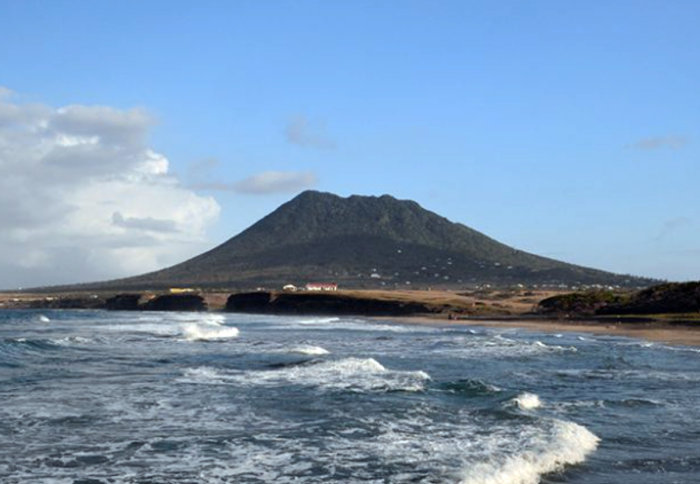
Quill Volcano on St Eustatius Island, Lesser Antilles
Recent events and updates in the Department of Earth Science and Engineering
Content
Publications
Conference Talks, Lectures, and Seminars
Awards
Research Activity
Impact and Media
Outreach
Fieldwork
PhD Vivas
New Staff
Obituary
Publications
Doughty-Jones, G., Lonergan, L., Mayall, M., Dee, S., (2019). The role of structural growth in controlling the facies and distribution of mass transport complexes in a deep-water salt mini-basin, Marine and Petroleum Geology, 104, 106-124.
Goes, S., Collier, J., Blundy, J., Davidson, J., Harmon, N., Henstock, T., Kendall, J.M., Macpherson, C., Rietbrock, A., Rychert, K., Prytulak, J., Van Hunen, J., Wilkinson, J.J., and Wilson, M., (2019). Project VoiLA: The Volatile Recycling in the Lesser Antilles, Eos 100.
Huerta, F., Vesovic, & V., (2019). A realistic vapour phase heat transfer model for the weathering of LNG stored in large tanks, Energy, Vol 174, ISSN 0360-5442, Pages 280-291.
Jackson, C.A-L., Magee, C., & Hunt-Stewart, E.R. (2019). Cenozoic contourites in the eastern Great Australian Bight, offshore southern Australia: implications for the onset of the Leeuwin current. Journal of Sedimentary Research, 89, 199-206.
Jackson, C.A-L., Elliott, G.M., Royce-Rogers, E., Gawthorpe, R.L., & Aas, T.E. (2019). Salt thickness and composition influence rift structural style, northern North Sea, offshore Norway. Basin Research, 31, 514-538.
McMullan, S. & Collins, G. S. (2019). Uncertainty quantification in continuous fragmentation airburst models. Icarus, 327, 19-35.
Nugraha, H., Jackson, C.A-L., Johnson, H.D., Hodgson, D.M., & Reeve, M.R. (2019). Tectonic and oceanographic process interactions archived in the Late Cretaceous to Present deep-marine stratigraphy on the Exmouth Plateau, offshore NW Australia. Basin Research, 31, 405-430.
Onyenanu, G.I., Hampson, G.J., Fitch, P.J.R., & Jackson, M.D., (2019). Effects of erosional scours on reservoir properties of heterolithic, distal lower shoreface sandstones, Petroleum Geoscience, 25, 235-248.
Steventon, M.S., Jackson, C.A-L., Hodgson, D.M., & Johnson, H.D. (2019). Strain analysis of a seismically-imaged mass-transport complex (MTC), offshore Uruguay. Basin Research, 31, 600-620.
Venereau, C., Martin?Short, R., Bastow, I. D., Allen, R. M., and Kounoudis, R., (2019). The role of variable slab dip in driving mantle flow at the eastern edge of the Alaskan subduction margin: insights from SKS shear?wave splitting. Geochem. Geophys. Geosyst., 20.
Wang, P., Cilliers, J.J., Neethling, S.J. & Brito-Parada, P.R. (2019). Effect of Particle Size on the Rising Behavior of Particle-Lade Bubbles. Langmuir, 35, 3680−3687.
Conference Talks, Lectures, and Seminars
Robert Zimmerman gave an invited lecture entitled "The role of effective stress coefficients in the mechanics of porous media" at the Symposium in Honour of Yves Guéguen at École Normale Supérieure, Paris on 4th - 6th April 2019. Other invited speakers included Jim Rice (Harvard), Shun-ichiro Karato (Yale), and Ian Main (Edinburgh).
Chris Jackson gave an invited talk at the European Geosciences Union (EGU) General Assembly (7th – 12th April). His talk was entitled ‘Seismic imaging and preservation of ancient landscapes’. In his talk, Chris showed how seismic reflection and borehole data can constrain the morphology and stratigraphic context of ancient ‘landscapes’. He also showed how these landscapes represent a rich archive of the temporal and spatial evolution of mantle convective processes, as well as tectonic motions in the overlying upper crust.
The day before the start of EGU, Chris Jackson ran the Vienna Marathon, completing the course in 3:15:46. Followed by five days of science and related socialising.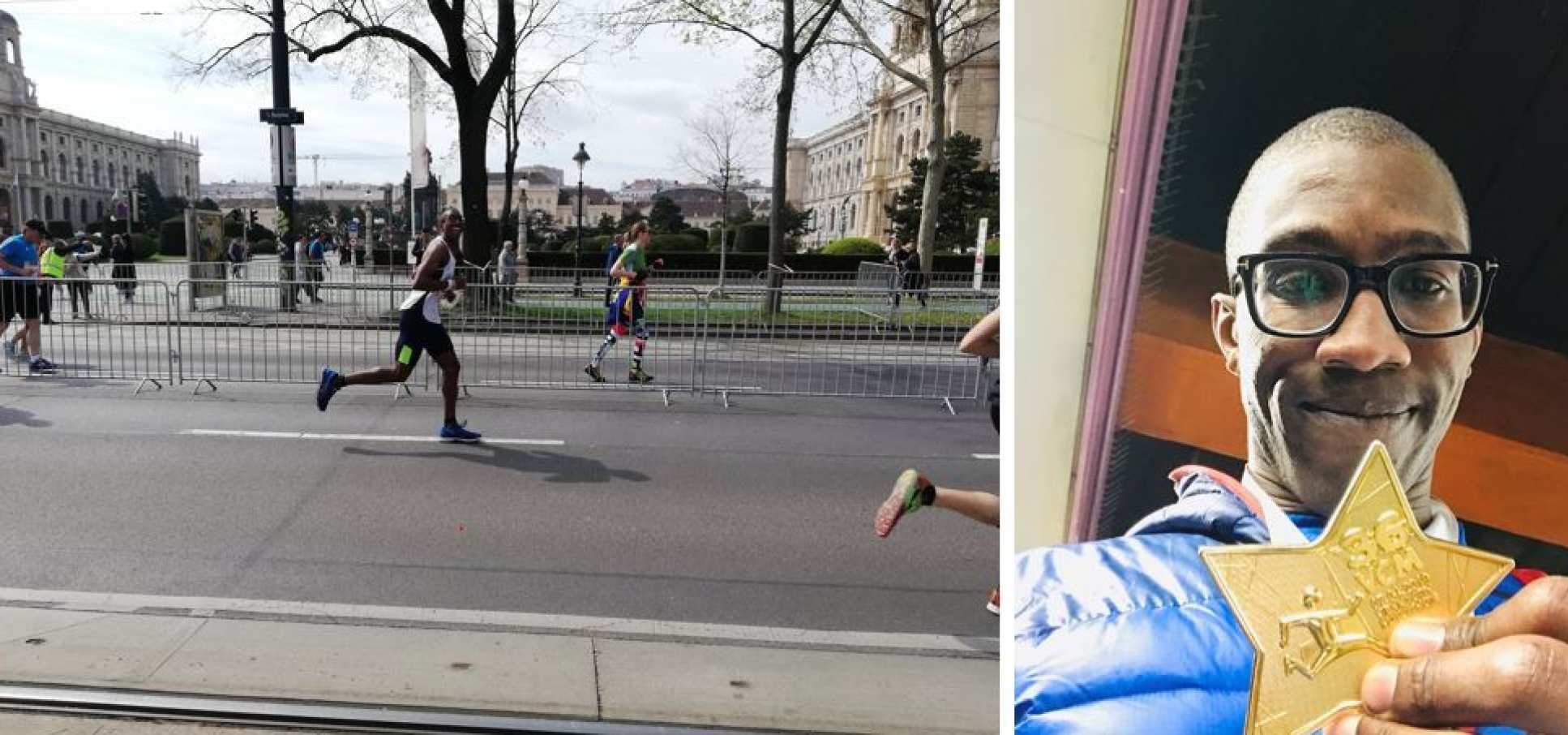
On 25th April, Chris Jackson gave an invited talk in the School of Geosciences, University of Edinburgh at their ‘Embedding Diversity & Fostering Inclusion’ event. Along with five other speakers, Chris talked about his experience as a ‘Person of Colour’ working in geosciences.
On 26th April, Chris Jackson gave an invited ‘Discourse’ at the Royal Institution. With a talk entitled, “How to look inside a volcano”, Chris outlined how 3D seismic reflection data are revolutionising our understanding of the internal structure and underlying ‘plumbing systems’ of ancient volcanoes.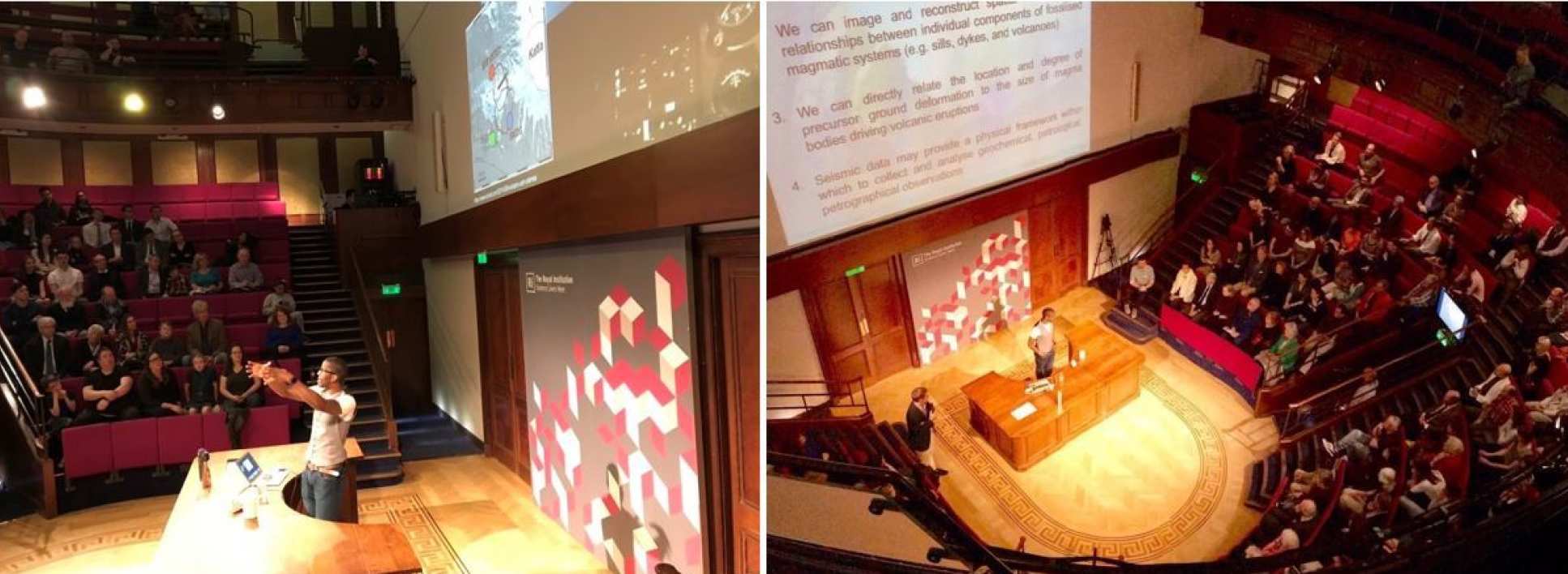
Robin Thomas gave a presentation entitled “Permeability change during the growth of dense 3D geomechanical fracture networks” at the 11th International Congress on Porous Media (Interpore), in Valencia, Spain, on 7th May 2019. This work was done as part of the NERC-funded HydroFrame project, in collaboration with Adriana Paluszny and Robert Zimmerman.
 On 7th May, Dr Jasmin Cooper presented her work on ‘Life cycle environmental impacts of natural gas drivetrains used in road freighting’ at the University of Purdue, Chicago during the 26th International College for Research for Production Engineering Lifecycle Engineering Conference. The proceedings can be read in Procedia CIRP Volume 80, 2019, Pages 334-339.
On 7th May, Dr Jasmin Cooper presented her work on ‘Life cycle environmental impacts of natural gas drivetrains used in road freighting’ at the University of Purdue, Chicago during the 26th International College for Research for Production Engineering Lifecycle Engineering Conference. The proceedings can be read in Procedia CIRP Volume 80, 2019, Pages 334-339.
Upcoming Conferences
ESE at AAPG and EAGE: A number of members of the Department will be involved in the American Association of Petroleum Geologists (19-22 May, San Antonio) and European Association of Geoscientists and Engineers (3-6 June, London), and at both these meetings the Department will have a stand. At AAPG you can come to say hello at booth 716 and join us for a reception on 20 May.
Awards
 Congratulations to PhD student Chetan Nathwani whose MSci project entitled "Apatite chemistry as an igneous fertility indicator for porphyry copper deposits: A preliminary study of the volcanic sequences of Central Chile" was a top ten finalist in the Halliburton Landmark Earth Model Award, a global competition. A paper on this topic has recently been submitted to Geology.
Congratulations to PhD student Chetan Nathwani whose MSci project entitled "Apatite chemistry as an igneous fertility indicator for porphyry copper deposits: A preliminary study of the volcanic sequences of Central Chile" was a top ten finalist in the Halliburton Landmark Earth Model Award, a global competition. A paper on this topic has recently been submitted to Geology.
 Congratulations to Jemimah-Sandra Samuel on being awarded the Graduate School's People’s Choice Award in the 4Cs Science Communication Writing Competition.
Congratulations to Jemimah-Sandra Samuel on being awarded the Graduate School's People’s Choice Award in the 4Cs Science Communication Writing Competition.
Research Activity
In March, ESE PhD student Tom Matthews spent 4 weeks working with project partner Rio Tinto in their research laboratories in Bundoora, Melbourne, Australia. Tom examined heavy mineral samples using automated scanning electron microscopy (SEM), to identify material containing titanite that could be used for his research on the chemistry of this mineral. He also presented his preliminary findings regarding the nature of titanite associated with the Strontian Igneous Complex, Scotland.
Basins Research Group (BRG) PhD student Isaac Odeh and Chris Jackson visited the core store in Aberdeen to investigate the sedimentology and stratigraphy of salt-influenced deep-water deposits (Paleocene) in the Northern North Sea. Isaac is also working with Howard Johnson, and his PhD is supported by Shell and Petroleum Technology Development Fund.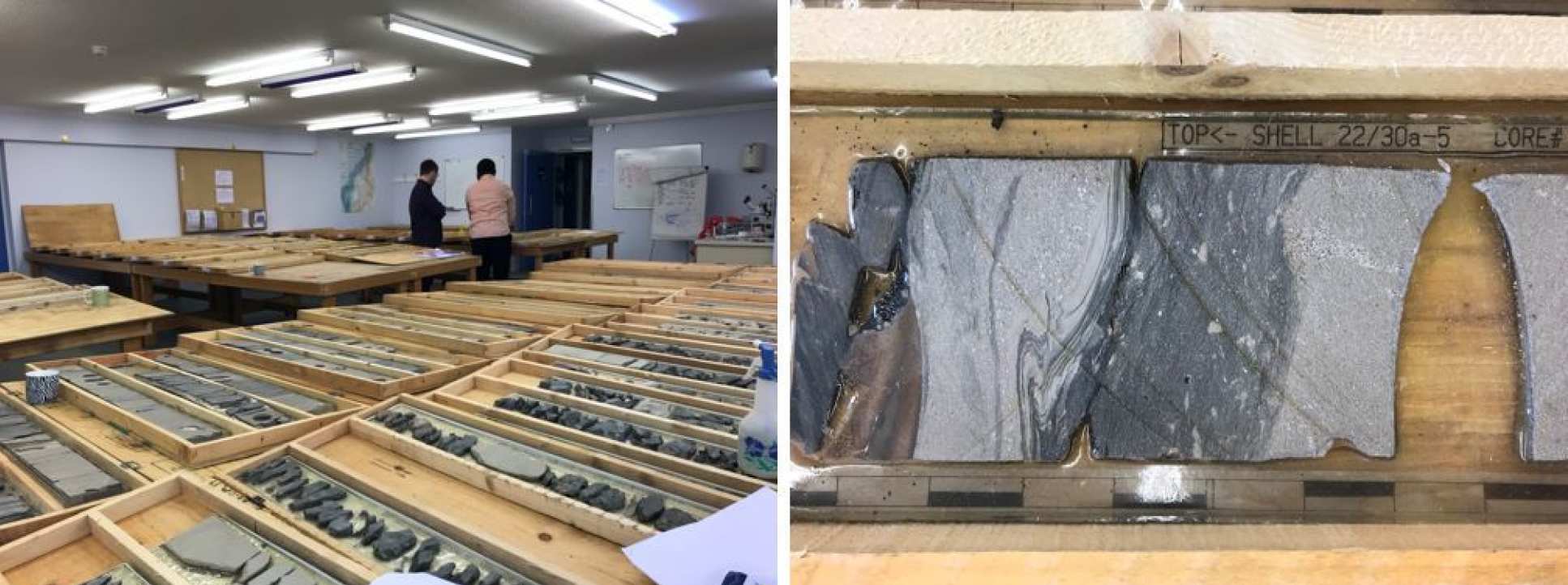
PhD student Mike Steventon and Chris Jackson of the BRG visited Enquest, Aberdeen to discuss his ongoing research on deep-water deposits (Upper Jurassic) in the Magnus Field, Northern North Sea. Mike is also working with Howard Johnson.
Impact and Media
Dick Selley gave an interview to the BBC on the continuing Newdigate tremors. Extracts were quoted online in 'SurreyLive'. He had a letter published in 'The Times' on seismic activity induced by hydraulic fracturing and railway trains.
Outreach
Adriana Paluszny gave an outreach science workshop to Year 1 students at her local primary school in Petersham, London, discussing concepts such as elasticity, plasticity, and other material properties. The image below shows some notes taken by one of the students!
Fieldwork
In March, Jamie Wilkinson and PhD student Chetan Nathwani from the LODE group carried out a field trip to Barranca and Arequipa in Peru. They sampled igneous rocks associated with porphyry copper deposits in collaboration with project partner Anglo American. Drillcore material was collected from the Corcapunta system in Northern Peru and the Chipispaya prospect from southern Peru, and both drillcore and outcrop samples were obtained from the Quellaveco District in southern Peru, the site of a major new copper mine development.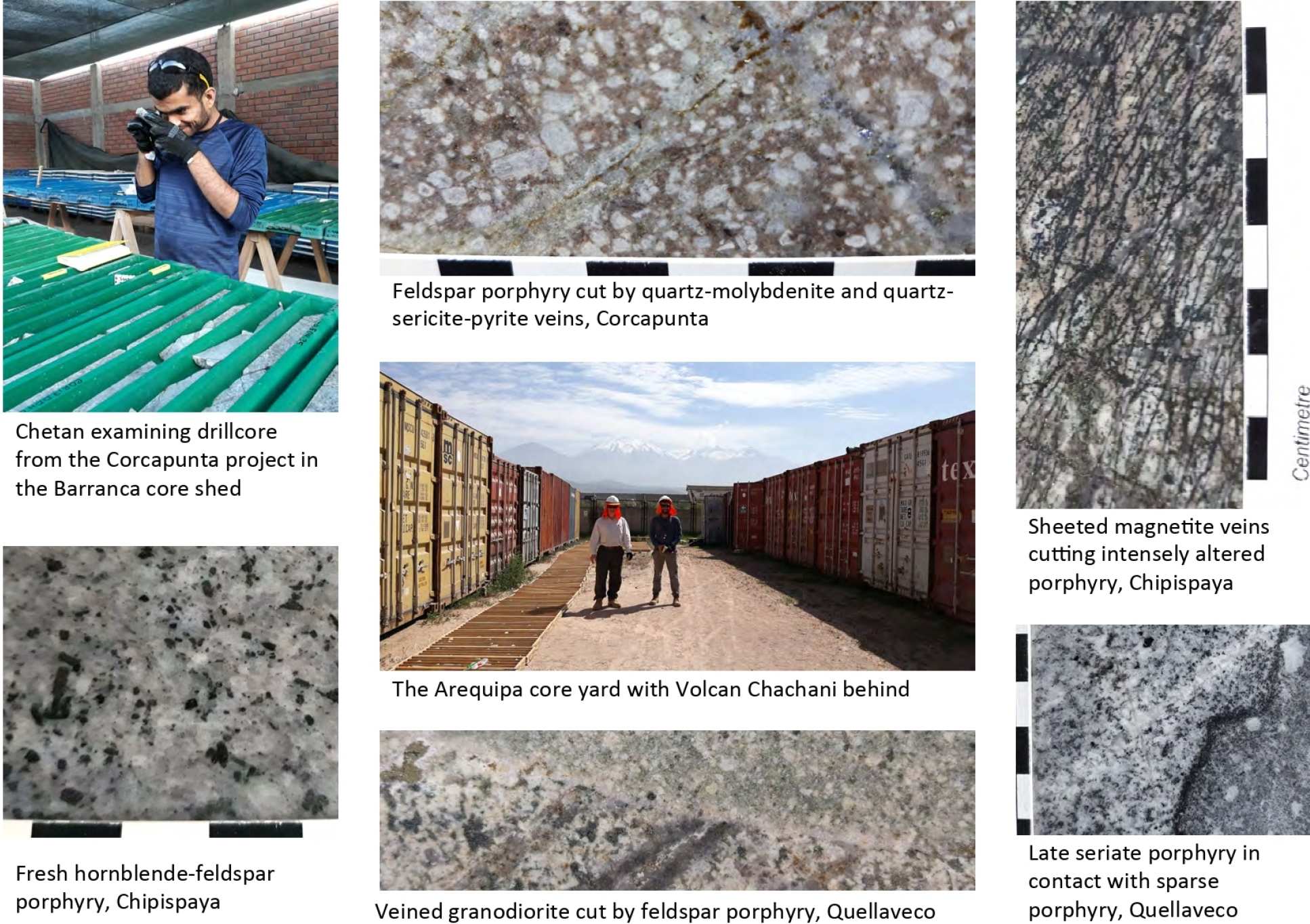
Also in March, LODE postdoc Simon Large, assisted in part by Jamie Wilkinson, undertook a sampling campaign in the high Andes just to the northeast of Santiago, Chile. Volcanic rocks were collected from the Miocene Abanico and Farellones Formations for the NERC FAMOS project (in collaboration with Matt Jackson). These rocks will be used to build up a picture of the geochemical evolution of arc magmas and their contained crystal cargo on ascent during the period .15 million years ago, prior to porphyry-copper mineralization in Central Chile.
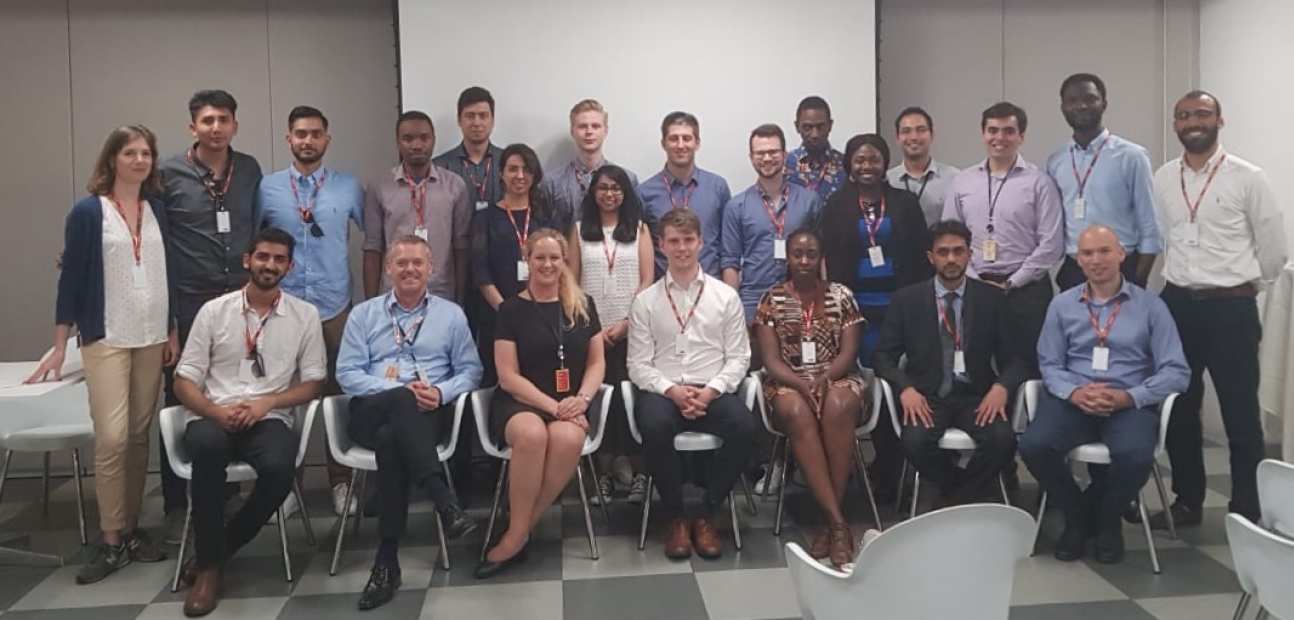

 ESE Petroleum Engineering MSc students were in Brazil in May, for the Society of Petroleum Engineers (SPE) Junior Chapter overseas field trip. While in Brazil, they visited Petrobras at the Centro de Pesquisas Leopoldo Américo Miguez de Mello (CENPES), Schlumberger and Baker-Hughes operational bases in Macae, Repsol-Sinopec and Equinor offices in Rio de Janeiro as well as Shell’s Advanced Oil Recovery Laboratory (LRAP), they met the Federal University of Rio de Janeiro (UFRJ) SPE Petrobowl team champions that Shell sponsored. At Shell Brazil, ESE Petroleum Engineering MSc students were part of a Shell Safety Day Session where they heard talks on varied and inspirational Petroleum Engineering career stories, in addition to the Shell values of Diversity and Health, Safety, Security and Environment. Shell Brazil is glad to have hosted ESE’s international MSc petroleum engineering students from UK, Norway, Egypt, Nigeria, Oman, Uganda, Latvia, France, Germany, Bolivia, Brazil, India, Iran & Bahrain.
ESE Petroleum Engineering MSc students were in Brazil in May, for the Society of Petroleum Engineers (SPE) Junior Chapter overseas field trip. While in Brazil, they visited Petrobras at the Centro de Pesquisas Leopoldo Américo Miguez de Mello (CENPES), Schlumberger and Baker-Hughes operational bases in Macae, Repsol-Sinopec and Equinor offices in Rio de Janeiro as well as Shell’s Advanced Oil Recovery Laboratory (LRAP), they met the Federal University of Rio de Janeiro (UFRJ) SPE Petrobowl team champions that Shell sponsored. At Shell Brazil, ESE Petroleum Engineering MSc students were part of a Shell Safety Day Session where they heard talks on varied and inspirational Petroleum Engineering career stories, in addition to the Shell values of Diversity and Health, Safety, Security and Environment. Shell Brazil is glad to have hosted ESE’s international MSc petroleum engineering students from UK, Norway, Egypt, Nigeria, Oman, Uganda, Latvia, France, Germany, Bolivia, Brazil, India, Iran & Bahrain.
PhD Vivas
Abdul Hamid Shahrizal passed his PhD viva in April. Congratulations Dr!
New Staff
Dr Charles Wood – Started on the 6th March as a Research Associate with Professor Nigel Brandon
Dr Bhavik Lodhia – Started on the 1st April as a Research Associate with Professor Al Fraser
Peipei Wang – Started on the 1st April as a Research Assistant with Dr Pablo Brito-Parada
Isobel Mackay – Started on the 26th April as an Undergraduate Education Administrator
Dr Haiyang Hu – Started on the 29th April as a Research Associate with Professor Matthew Jackson
Dr Leonardo Pichel has joined the BRG as a Post-Doctoral Research Assistant to work with Chris Jackson on salt tectonic problems offshore West Africa, offshore Brazil, and in the Norwegian and UK sectors of the Northern North Sea.
Obituary
 Mike Ala, a friend and colleague to many in the department, has passed away. Mike gained his PhD at Imperial College in 1973 and after a period in industry returned to Imperial in 1981 as a Lecturer. He was a key member of staff on the Petroleum Geoscience course for which he became Director of in 1994. He will be greatly missed.
Mike Ala, a friend and colleague to many in the department, has passed away. Mike gained his PhD at Imperial College in 1973 and after a period in industry returned to Imperial in 1981 as a Lecturer. He was a key member of staff on the Petroleum Geoscience course for which he became Director of in 1994. He will be greatly missed.
Dr Mohammad Ali Ala
Dr Mohammad Ali (or Mike as he preferred) Ala was born in Tehran, Iran on 5th August 1944, the son of Mohammad Khan Ala, a physician and Roghieh Fakhr-e-Iran Mafi, granddaughter of the prince regent of Iran. He moved to the UK in 1958 and attended Clayesmore School in Dorset. After finishing school in 1963 he took a year out travelling (one of his favourite pastimes) by car from London to Tehran and then went on to university in London. He obtained a BSc in Oil Technology and an MSc, PhD and DIC in Petroleum Geology, all from Imperial College, an institution he came to think of as his home from home.
Mike had been associated with the international oil industry for more than 45 years, as an exploration geologist, a consultant and within the field of education and training. In 1973 he joined Seagull Exploration and was involved in exploration studies and prospect evaluation in Africa, the Middle East, Eastern Mediterranean, the Caribbean and South America. In 1976 he became the company’s General Manager in London, responsible for North European and Middle Eastern operations.
After Seagull, he joined the academic staff of the Earth Science Department, at Imperial College in 1981. He found the role fulfilling and this was reflected in him rising to the post of Director of the internationally recognised MSc Petroleum Geoscience Course in 1994. Mike was much admired by many generations of students, both for his personable and supportive nature, the wealth of professional industrial experience he provided, as well as his lecturing skills and dapper dress sense.
Mike had published over 60 research and review articles covering the Middle East and Africa. However, his primary interest remained the petroleum geology and the oil industry of his native Iran, a topic he was fluent in.
He was on the Editorial Board of the International Journal of Petroleum Geology and Editor in Chief of Seventy-Five Years of Progress in Oil Field Science and Technology, published in 1990. He was the author of an Introduction to Petroleum Geoscience, a text book, published by World Scientific / Imperial College Press in 2017 which, he would have hoped will continue to influence and inform future generations of students for years to come.
Since 1982 he had been involved in organising and presenting numerous training programmes in Europe, throughout Africa, the Middle East and South East Asia for a number of large corporate and academic institutions, allowing him the chance again to enjoy one of his favourite pastimes, travelling.
Beyond geological evaluation, he was also engaged with the commercial aspects of the oil industry, as advisor and non-executive director on the Boards of a number of international oil companies. Outside of the oil industry, Mike was a key and active member of the Iran society, which was founded by his uncle in 1911, and served on the council for a number of years. He had keen interests in all aspects of Iranian culture.
He is survived by his two sons, Hormoz & Kamran and his loving wife Farkhondeh.
Main photo credit: George Cooper
Article text (excluding photos or graphics) © Imperial College London.
Photos and graphics subject to third party copyright used with permission or © Imperial College London.
Reporter
Jemimah-Sandra Samuel
Department of Earth Science & Engineering